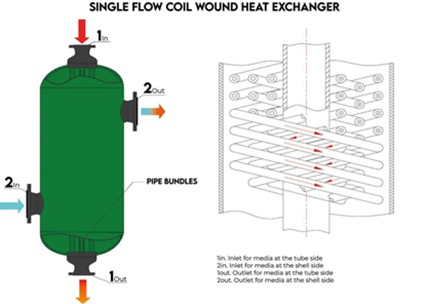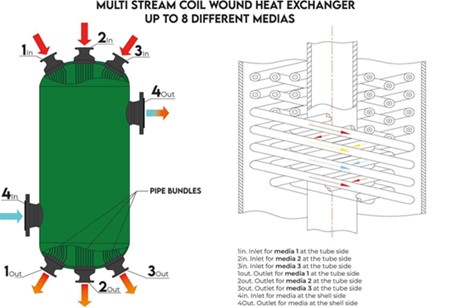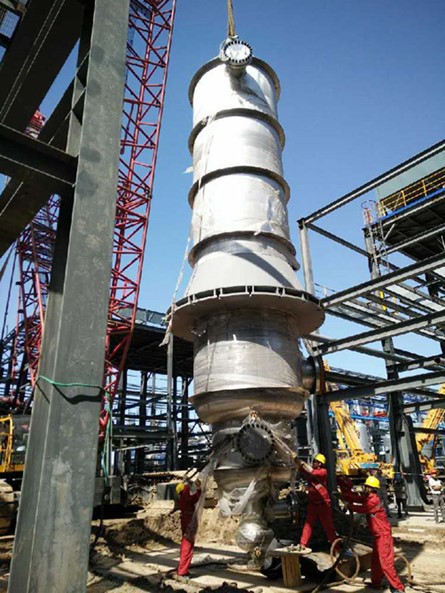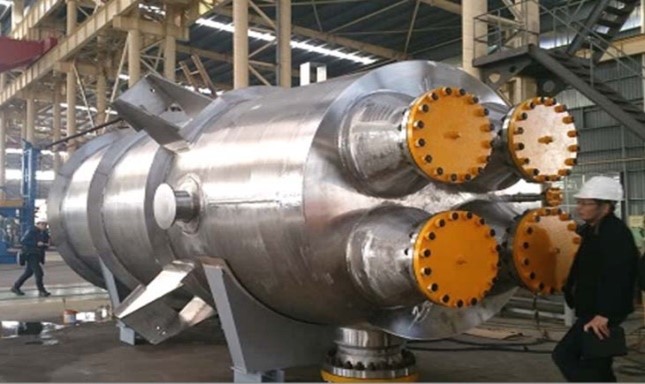Coil Wound Heat Exchangers
Coil wound heat exchangers are one of the most advanced, efficient and energy-saving large-scale heat exchange equipment in the world.
It not only has the advantages of high heat transfer efficiency, compact structure and light weight of plate heat exchangers, but also has the advantages of high pressure and high temperature resistance, good sealing performance, safety and reliability of shell and tube heat exchanger.
Judging from the current situation of global water and energy shortages, this product has broad application in industries with large energy and cooling water consumptions.
The Coil Wound tube Heat Exchanger is made of one or more groups of spirally wound tubes placed in a shell. The heat exchange tubes have enhanced heat transfer elements such as smooth tubes, corrugated tubes, or internal thread external bellows, arranged in the shell at different spiral angles.
Coil Wound Heat Exchangers are also popularly known as Giaque–Hampson heat exchangers, spiral tube heat exchangers, or coiled tubular heat exchangers.
APPLICATIONS
Advantages
COMPACTNESS
Compact structure and small footprint. Coil wound tube heat exchangers are usually arranged vertically and occupy only about one-tenth of the area of ordinary shell and tube heat exchangers.
EASY TO ACHIEVE LARGE-SCALE
Limited by tube length and transportation, ordinary shell and tube heat exchangers have a maximum heat exchanger area of 3 000 m², while Coil Wound Heat Exchangers have a maximum heat exchanger area of 25 000 m² per shell.
EASY TO IMPLEMENT A VARIETY OF MEDIA
Up to 8 different media can be heated, condensed or cooled simultaneously.
HIGH TEMPERATURES AND PRESSURES
The specific design of our Coil Wound Heat Exchangers makes them extremely robust, they can handle much larger temperature and pressure differences than other heat exchanger types.
LOW TEMPERATURE DIFFERENCE STRESS
Heat exchanger tubes of this high-efficiency heat exchanger adopt a spiral structure, which is equivalent to using countless expansion joints in the heat exchanger. The heat exchanger tubes can expand freely when subjected to temperature changes.
LOW TEMPERATURE APPROACH
A very close temperature approach can be achieved, which can effectively recover more heat. The spiral wound heat exchanger tubes are 4 to 6 times longer than the length of the shell side. The temperature approach of ordinary shell and tube heat exchangers is generally about 40°C, while the temperature approach of Coil Wound Heat Exchangers can be within 5°C.
CONDENSATION
The tube side media stays in the heat exchange tube bundle for a longer time, and thus condensation can be more complete.
HIGH-EFFICIENCY HEAT EXCHANGER
Due to the spiral design of the tubes, the tube side media must continuously change directions, thus enhancing turbulent flow. This increases heat transfer efficiency and reduces the heat exchange surface area. Compared with ordinary shell and tube heat exchangers, Coil Wound Heat Exchangers’ heat transfer coefficient can be increased up to 6 times.




